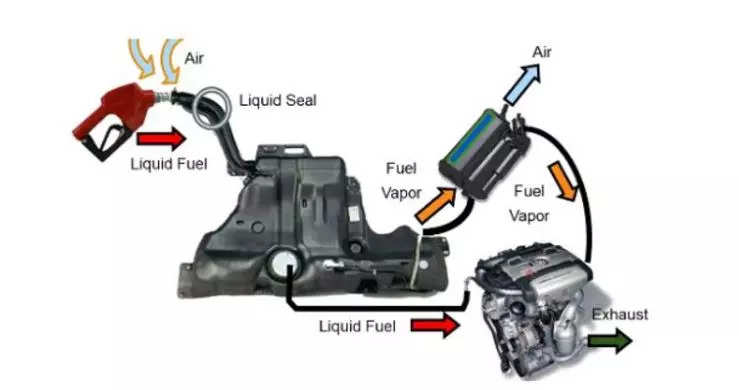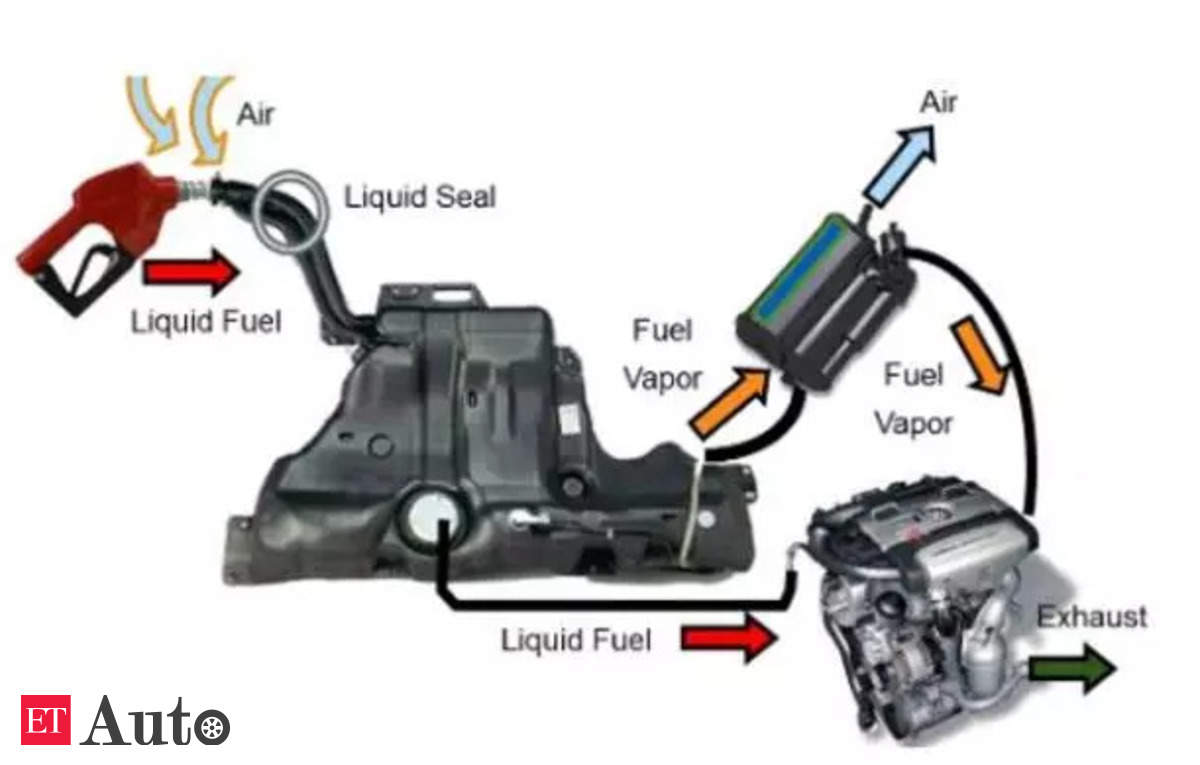
New Delhi: Any discussion about emissions ultimately ends up in vehicular emissions, particularly the one from the burning of fossil fuels, which are a major source of air pollution in many urban areas.
At the recent international conference organized by the Emission Control Manufacturers Association (ECMA), Dr. Terry Lathem, Manager of Government Relations at Ingevity Corp, USA, delivered a keynote address that illuminated a pressing environmental concern – refuelling emissions. In an interaction with ETAuto following the presentation, he engaged in a critical discussion on this often-overlooked aspect of emissions control.
The discussion with Dr. Lathem began with a critical question about controlling emissions at their source in countries like India, where vehicular emissions are a significant concern. In response, he emphasized the importance of addressing not just exhaust emissions but also evaporative emissions, which occur when vehicles are not in operation, such as when they are parked or refuelled. He stressed that evaporative emissions can be as significant as exhaust emissions and, therefore, deserve regulatory attention.
He highlighted the need for India to align its regulatory standards with those of the United States, China, Brazil, and Europe, where substantial progress has been made in controlling both exhaust and evaporative emissions. He pointed out that India has traditionally followed European regulations, but due to different climate conditions and higher temperatures, specific measures are required for India to combat evaporative emissions effectively.
Refuelling vs. exhaust emissions
To drive home the significance of refuelling emissions, Dr. Lathem presented a striking comparison. He explained that a single refuelling event can release emissions equivalent to the exhaust emissions produced during a vehicle’s entire driving range between refills. This alarming revelation highlighted the urgency of addressing refueling emissions on par with exhaust emissions.
In a real-world example, he considered a BS VI light-duty vehicle in India with a 32-liter fuel tank and a fuel economy of 24 km per litter. Such a vehicle could potentially emit 44.8 grams of NMVOCs during a refuelling event, while exhaust emissions over 768 km of driving would amount to 52.2 grams. These figures exemplified the need to address refueling emissions more comprehensively, especially in countries where petrol-engine vehicles are predominant.
Refuelling emissions are not mere abstract data points; they have a tangible impact on air quality. Dr. Lathem emphasized that these emissions contribute significantly to smog and haze, which often plague urban areas, causing respiratory problems and impairing overall well-being. Moreover, they contain toxic compounds, such as benzene, that pose substantial health risks. The audience was left with no doubts about the necessity of addressing refuelling emissions as part of comprehensive emissions control efforts.
Global regulatory landscape
The presentation then shifted focus to global regulations surrounding refuelling emissions. Dr. Lathem highlighted that the United States initiated regulatory measures for refuelling emissions in 1998. Subsequently, China and Brazil also adopted similar standards in 2018 and 2023, respectively, to control NMVOCs and reduce ozone and fine particulate matter.
However, in the case of India, regulatory progress for addressing refuelling emissions has been limited. Dr. Lathem revealed that while India is currently considering adopting evaporative emission limits similar to Euro 6d, specific refuelling limits are not proposed. This is despite the surge in petrol-engine vehicle sales in the country. The need for India to align its regulations with global standards became evident, considering the projected increase in refuelling-related VOC and benzene emissions.
Current methods and their challenges
India has sought to control refuelling emissions through Stage I and II vapor recovery systems. However, Dr. Lathem pointed out several challenges associated with these methods, including lower-than-expected in-use efficiency, installation issues, and the potential impact of ethanol fuels on the durability of the systems. These challenges raised doubts about the long-term effectiveness of this approach.
On-Board Refuelling Vapour Recovery (ORVR): A viable solution
Dr. Lathem proposed an alternative solution for more effective and efficient refuelling emissions control – On-Board Refuelling Vapor Recovery (ORVR) systems. These systems have been successfully implemented for over 25 years in various global markets, controlling 98% of refueling emissions. ORVR technology is cost-effective, as it captures petrol NMVOC vapors from refueling in a canister, which are then used by the vehicle’s engine during combustion, preventing their release into the atmosphere.
ORVR systems come at a relatively low cost, ranging from 830 to 1,660 INR per vehicle. Consumers can recover this cost through fuel savings, as refueling vapors are captured and re-used as fuel. Moreover, ORVR systems are compatible with ethanol fuels and flex-fuel vehicles, eliminating the need for new technology development.
The urgency for India and beyond
The message was clear – refuelling emissions are as significant as exhaust emissions and have dire implications for air quality and public health. As India faces the challenges posed by the rapid growth of petrol-engine vehicles, the adoption of ORVR systems emerges as a viable solution that is cost-effective, technologically mature, and capable of significantly reducing daily evaporative emissions.
The combined insights from Dr. Lathem’s presentation and the discussion with him underscore the urgent need for addressing refueling emissions on a global scale. As countries like India grapple with deteriorating air quality and increased petrol-engine vehicle sales, the adoption of ORVR systems emerges as a practical, cost-effective, and readily available solution. It is a call to action for governments, regulators, and industry stakeholders to implement and enforce regulations that promote cleaner air and a healthier future for all.









